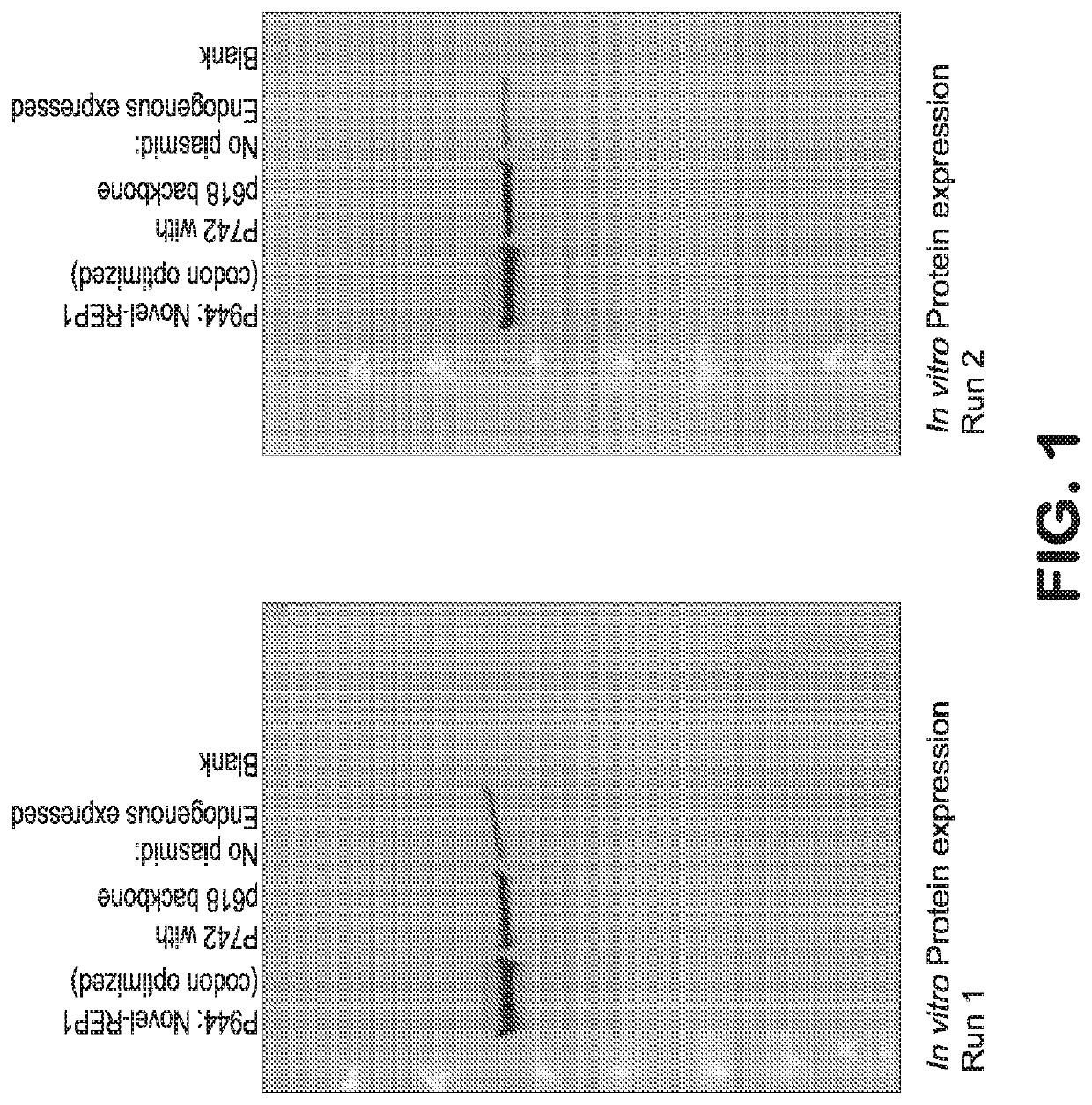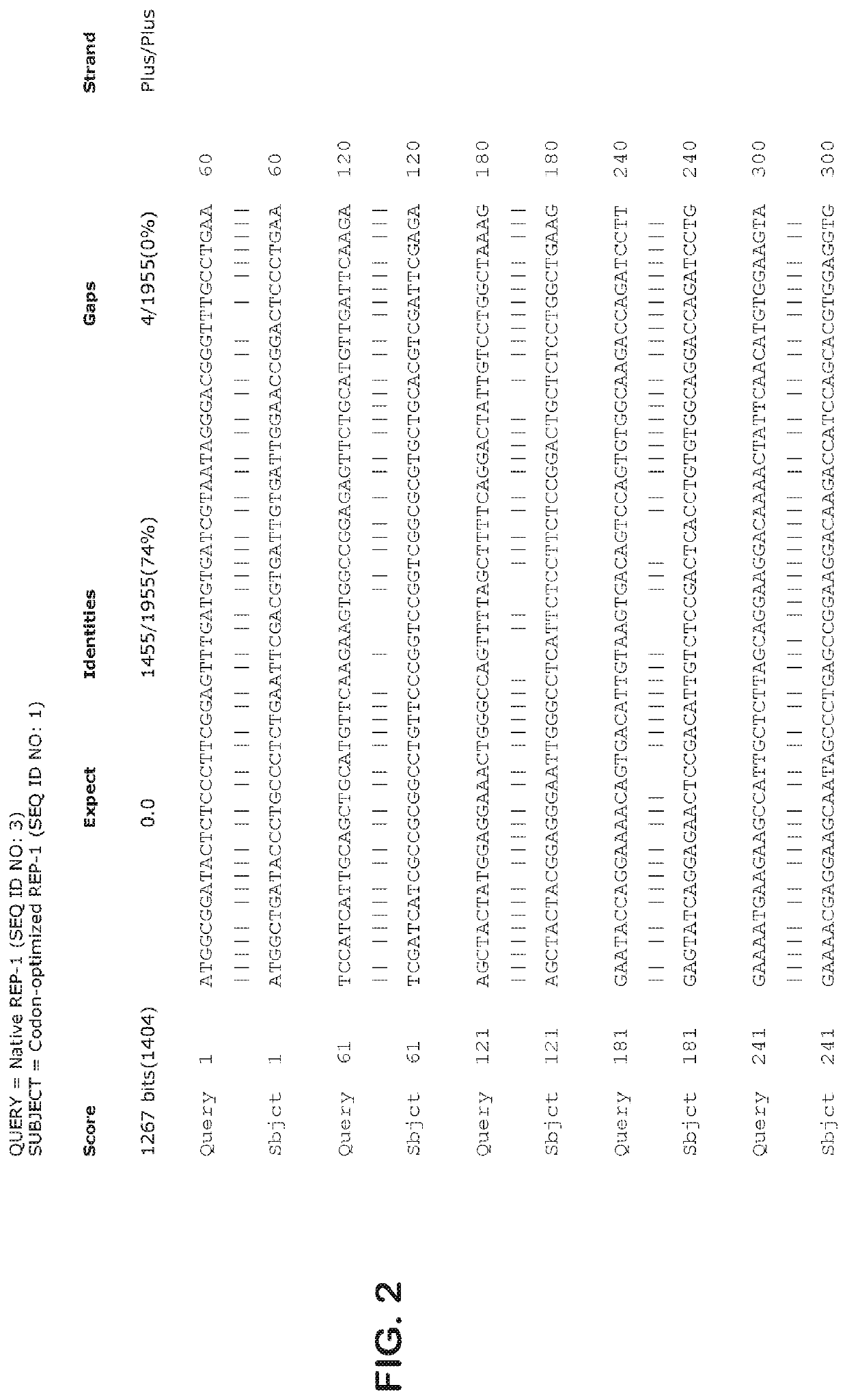Gene therapy for ocular disorders
a technology for ocular disorders and gene therapy, applied in the direction of peptide sources, drug compositions, genetic material ingredients, etc., can solve the problems of affecting the ability, affecting the function of rep-1 protein, and affecting the ability of the body to function normally
- Summary
- Abstract
- Description
- Claims
- Application Information
AI Technical Summary
Benefits of technology
Problems solved by technology
Method used
Image
Examples
example 1
iation of Pluripotent Stem Cells into RPE
[0127]Choroideremia lacks a relevant mouse model and there is no canine model, therefore, transduction and expression is tested in a human retinal cell model of the disease. Because it is impossible to obtain retinal cells from a living patient, RPE are generated from induced pluripotent stem cells. Pluripotent stem cells are directed to RPE using the protocol described by Buchholz et al, Rapid and Efficient Directed Differentiation of Human Pluripotent Stem Cells Into Retinal Pigmented Epithelium, Stem Cells Translational Medicine, 2013; 2:384-393 which is incorporated by reference in its entirety. See also, Cereso et al, Proof of concept for AAV2 / 5-mediated gene therapy in iPSC-derived retinal pigment epithelium of a choroideremia patient, Molecular Therapy—Methods & Clinical Development (2014) 1, 14011, which is incorporated by reference in its entirety. Other methods for producing RPE are known in the art.
[0128]Briefly, the human induced ...
example 2
nsduced with AAV-REP-1
[0131]Briefly, AAV2 / 8CMV.CBA-REP-1 viral vector incorporating REP-1 codon optimized sequences are produced by transient transfection of HEK293 cells, and the viral particles are precipitated from either the supernatant using polyethylene glycol. See, e.g., Guo et al, Rapid and simplified purification of recombinant adeno-associated virus, J Virol Methods. 2012 August; 183(2): 139-146, which is incorporated herein by reference. The vectors are purified by double CsCl centrifugation, dialyzed, and titered by dot blot assay.
[0132]For the prenylation experiments, RPE are seeded in 24-well plates, and 1.2×106 cells are estimated at confluence. Cells are transduced with 100,000 vg per cell, and prenylation assays are performed at 4 weeks posttransduction. Experiments are performed in triplicate.
example 3
on
[0133]An in vitro prenylation assay is performed as described in Vasireddy et al, PLoS One. 2013 May 7; 8(5):e61396, cited above, using [3F1]-geranylgeranyl pyrophosphate (GGPP) (Perkin Elmer, Boston, Mass., USA) as a prenyl group donor, in the presence of recombinant Rab geranylgeranyl transferease and RAB27. Incorporation of radiolabeled prenyl groups into the RAB27 protein is measured by scintillation counting. For consistency the control values are normalized to 100 and used as the base value. All experiments are performed in triplicate, and statistical comparison of prenylation between experimental and control groups is evaluated using the two-tailed unpaired student's t-test.
[0134]Briefly, 48 hr post transduction, transduced REP cells are washed with cold PBS. Cell pellets are collected and washed thoroughly with cold PBS. Cells are lysed on ice for 30 min using RIPA+Protease inhibitors. In an alternative protocol, cells are sonicated. Cytosolic fractions are collected by ce...
PUM
| Property | Measurement | Unit |
|---|---|---|
| volumes | aaaaa | aaaaa |
| volume | aaaaa | aaaaa |
| volume | aaaaa | aaaaa |
Abstract
Description
Claims
Application Information
 Login to View More
Login to View More - R&D
- Intellectual Property
- Life Sciences
- Materials
- Tech Scout
- Unparalleled Data Quality
- Higher Quality Content
- 60% Fewer Hallucinations
Browse by: Latest US Patents, China's latest patents, Technical Efficacy Thesaurus, Application Domain, Technology Topic, Popular Technical Reports.
© 2025 PatSnap. All rights reserved.Legal|Privacy policy|Modern Slavery Act Transparency Statement|Sitemap|About US| Contact US: help@patsnap.com



